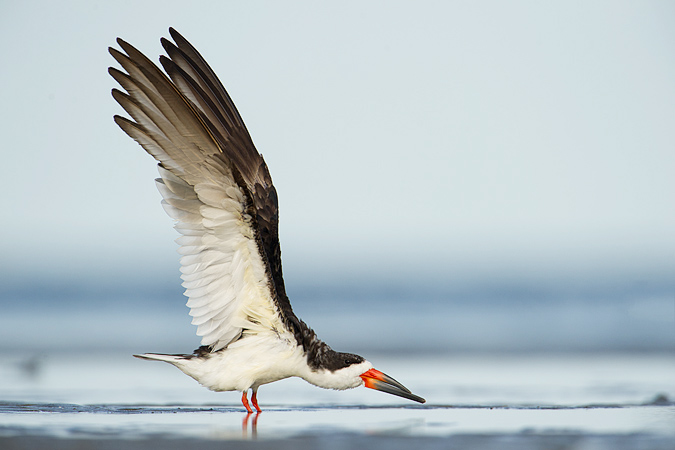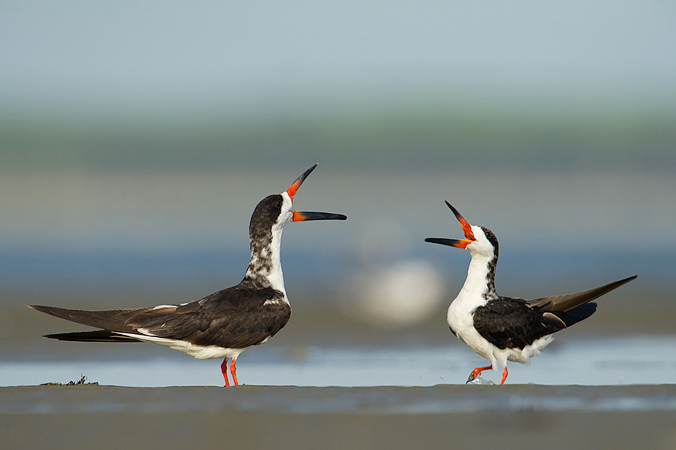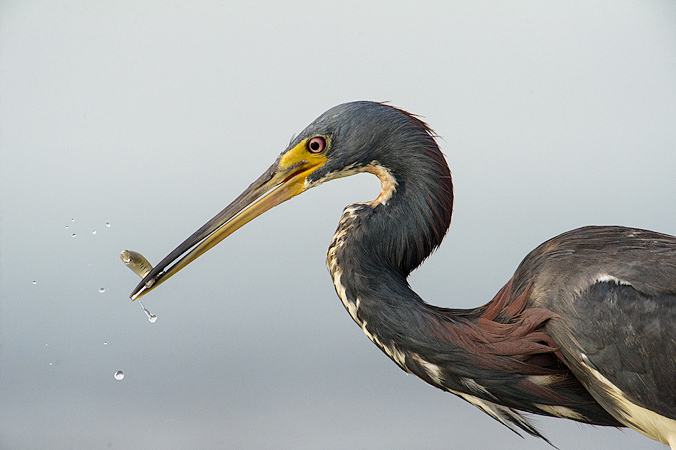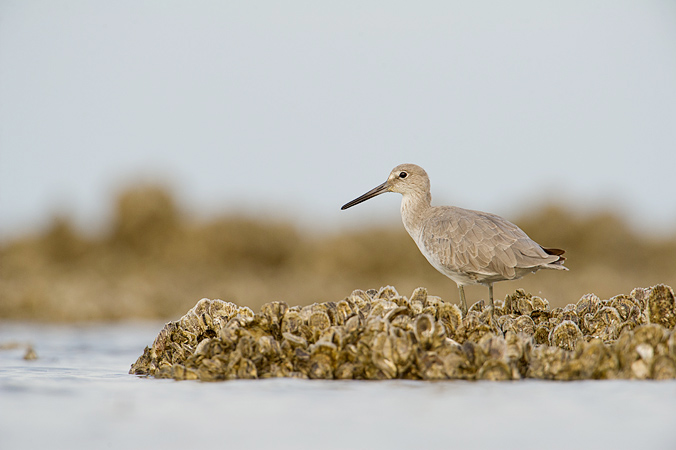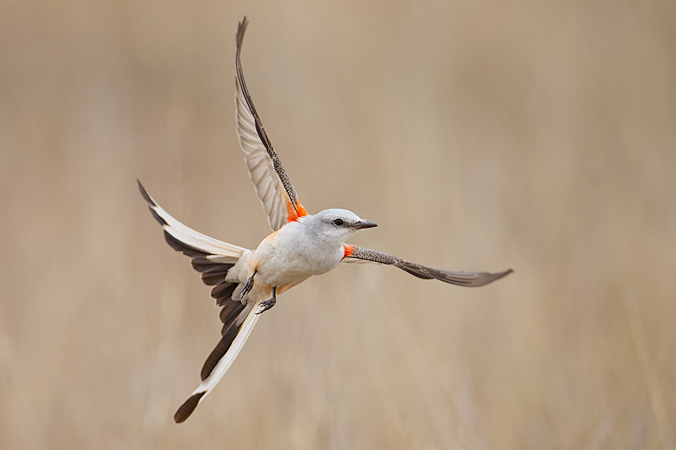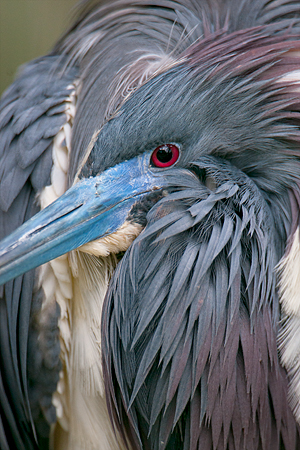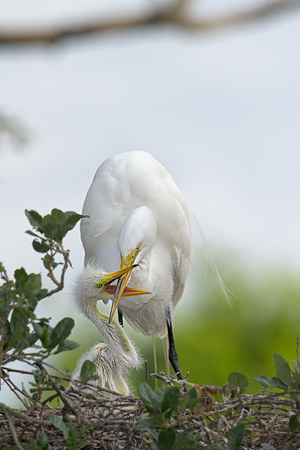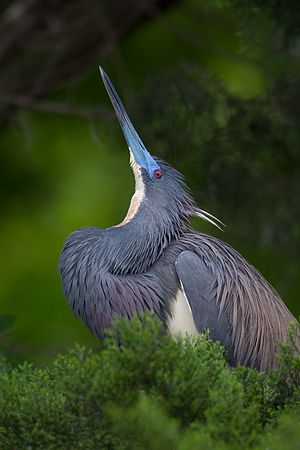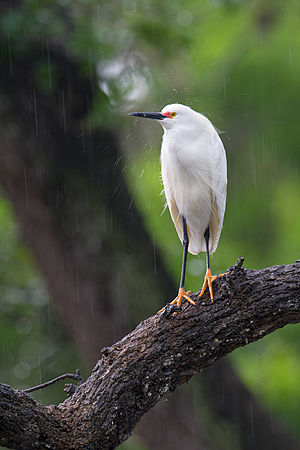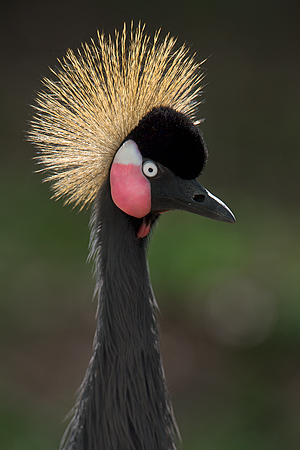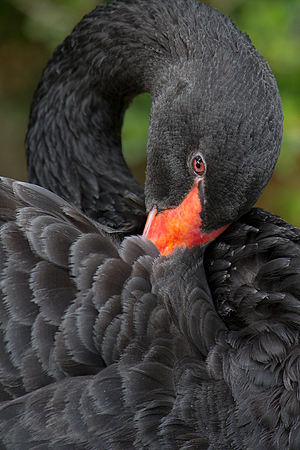Do you have one of those old friends who no matter how long it’s been, whenever you get back together you can pick up just like you had seen each other yesterday? I have some of the two-legged kind but Fish Haul Creek is a place that is friend just like that. When I first moved to South Carolina, I photographed at Fish Haul about every other day. I haven’t spent that much time there recently. While there are always new ways to photograph there and you never know what will be on the mud flats, I’ve been trying to add more variety to my image library. Still it feels great to come back and I think there is no better time to be at Fish Haul than the fall (ok, there is one week in late spring that gives fall a run for the money).
Part of what makes fall so great is that all the chicks have hatched and fledged both from birds that nest in South Carolina as well as those that nest all up the Atlantic. And it seems like once the birds can fly, the parents take the families down to this piece of paradise. That means that when the tides are right, you can find the water’s edge full of gulls, terns, skimmers, shorebirds, herons, egrets, and almost any other saltwater feeding bird you can think of. I spent a lot of this afternoon with the Black Skimmers. Their ridiculous beak always makes them look so comical, perhaps never more so than when they are showing each other some attitude. These types of interactions are fairly common this time of year when everyone wants to protect their spot on the sand.
The reason most of the birds come to Fish Haul Creek is for the food. About one month in the summer is perhaps the only dead time here because everyone is busy raising families, but at any other time they come to eat! It is the tides that bring the food. The tide goes out revealing the mud flats which are littered with crabs, worms, and countless other invertebrates. Many of the birds, like this Tricolored Heron, come for the fish. The fish are left stranded in pools formed by the tides or they swim out and back when the water levels change. Either way that makes for a smorgasbord for any bird willing to get its feet wet.
Anyone who has taken a class or workshop with me knows that I always advise people to stick with the common animals instead of hunting down the rarities. If you try and search out that one rare animal you almost always end up with no photos and even worse run the risk of disturbing the animal. Today I followed my own advice and spent some time with the Willets that were feeding among the oysters. I knew there were some gorgeous American Oystercatchers hanging around but they were skittish and trying to approach them was most likely just going to scare the birds. Often when you work the braver birds like the Willets the other shyer birds will join in after it seems like you are no threat. The oystercatchers never join the party, but I had a blast with the Willets anyway. They were catching small crabs and other crustaceans that started to move around when the water returned.
The results from the 2013 Wildlife in Focus were recently announced and I’m honored to have received third place overall with 27 photographs placing from 1st to 5th in their respective categories. The 51 photographer entries (some entries are pairs of photographers) produced some amazing photographs. Hector Astorga received a well-deserved first place and second place went to Karine Aigner whom I had the please of meeting at the North American Nature Photography Association’s annual meeting in the spring. There were some amazing photographs created showcasing the diversity, behavior, and beauty of Texas’ wildlife and landscapes. If you are interested, you can see all the winning photographs at the Wildlife in Focus website.
I owe an enormous thanks to the landowners at the Sick Dog Ranch, Mitchell and Michael Dale. They gave me tremendous help and assistance during the shooting period of the contest. It was only with their help and that of Rick Forrester, the ranch manager, that I was able to find and photograph the diverse fauna on the ranch. Lastly, I owe a huge amount of thanks to Patti Young, the executive director of Wildlife in Focus for organizing the contest; an enormous amount of work goes into a contest of this size and scope not to mention the wonderful educational outreach that uses the photographs and the books created from them. It is this educational outreach including the Kritters 4 Kids program that truly makes this a special contest like no other.
It has been a very, very, very long time since I made a blog post. Falling behind a few days quickly becomes weeks and then months. It’s remarkable how easy it is to build a huge backlog of photos to go through. When they build, it just gets bigger. This last year held many events that made posting to the blog fall to the low end of the priorities. Not the least of which was losing roughly 7 months of photographs from what I felt was my best photography to date. It’s time to jump back on the saddle again and resume posting – too many amazing critters out there not to share.
From the middle of February through June 1st of this year I had the pleasure of competing in the Wildlife in Focus competition. I’ll explain a bit more about the contest in future posts, but it’s a great contest held in southern Texas to foster the appreciation of wildlife and the protection of habitat. It’s a unique competition in that all photographs submitted must be taken on the property you are assigned to during the contest period. There are categories for nearly all varieties of wildlife and even with a three month shooting period you always feel there isn’t enough time to capture the 100 photographs you will submit. It was great fun and a wonderful chance to improve skills. The results are announced in September, but for now I’ll introduce some of the critters and photographs that I chose not to submit. While not good enough for submission, many of these images are still quality images in their own right.
One of my favorite subjects definitely has to be the Scissor-tailed Flycatcher. This bird is stunningly graceful combined with an active personality. To make matters even better, this bird was rather brave and approachable. These gems were everywhere – I would estimate the population in the 100s on the property. The last thing I wish to say is that photographs that I captured all owe an incredible amount of thanks to the Sick Dog Ranch. The support and assistance I received from ranch owners Mitchell and Michael Dale and the ranch manager, Rick Forrister, was tremendous. In addition to providing me access to over 7,000 acres of amazing south Texas scrubland, they also provided me with advice and assistance countless times. The Sick Dog Ranch is a gem of Texas’ Coastal Bend region.
Today was my third day in a row at the rookery at the St. Augustine Alligator Farm. Having taken certain types of shots, I was on the lookout for different sorts of photos. Either the less common ones or ones that I hadn’t been able to do justice to so far. Today was a lovely cloudy and miserable day. Perfect light! I started with a great Tricolored Heron. There’s something about the shaggy look that I find irresistible. I worked a tight shot, but instead of a typical head shot, I focused on the shag and used a more unusual composition.
I spent a little bit of time with some of the chicks. There is usually one thing at the front of every chick’s mind – getting fed. This Great Egret chick has grabbed the bill of its parent. When the chick does this for an extended period of time, it induces the parent to regurgitate the food that it has captured for the chick. Sometimes these tugs can last quite a while before the chick gets what it wants.
It’s amazing how different the displays to attract a mate are between the species. Some spread their plumes wide, others call a lot, but the Tricolored Heron is silent and doesn’t use its body plumes. Instead it puffs up its shaggy neck and leans back and thrusts its bill vertically. This pose here is an intermediary pose when the heron is between displays.
Later in the day, the overcast sky opened up and started to rain lightly. Most people left at this time, but the photography really picked up. This Snowy Egret didn’t mind at all as the rain landed on its head.
The St. Augustine Alligator Farm attracts wild birds to the rookery because of the alligators, but the farm also runs a zoo. In addition to many crocodiles and alligators, they have other reptiles, parrots, monkeys, and other birds. I managed to tear myself away from the rookery to seek out some of the other subjects. The monkeys are hard to photograph with the wires of the cages, but the Hooded Cranes made for great subjects. This bird is found in the African continent in the wild.
Black Swans are always a crowd-pleaser. This bird is from Australia. The overcast light had come back and is my light of choice for bringing out the detail in black birds. From looking at the posted photos from today, you might think my camera was stuck in vertical and tight shots, but I swear I took other kinds of photos too 🙂

